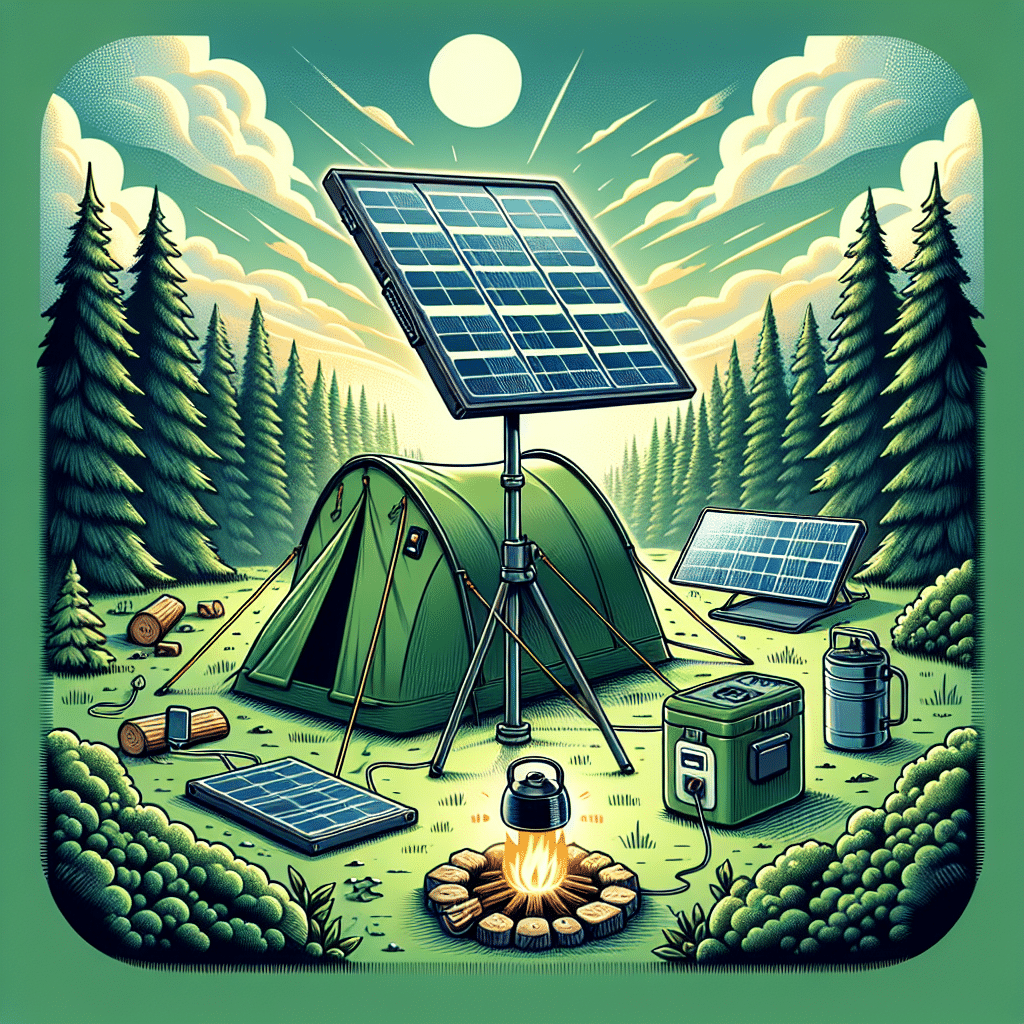DIY Solar Panel Hacks for Camping Adventures
Understanding Solar Power Basics
Before diving into hacks, it’s essential to grasp solar panel basics for optimal use during camping. Solar panels convert sunlight into electricity, making them an eco-friendly power source. The primary components include solar cells, an inverter to convert DC to AC power, and a battery for energy storage. Knowing these components can help in configuring DIY projects effectively.
Selecting the Right Solar Panel
1. Types of Solar Panels
- Monocrystalline: High efficiency, space-efficient, suitable for limited areas.
- Polycrystalline: Lower cost, slightly less efficient, good for budget builds.
- Thin-Film: Flexible and lightweight, best for portable projects.
2. Power Requirements
Calculate the wattage needed for devices you plan to use. Common camping devices include LED lights (2-5 watts), portable refrigerators (40-60 watts), and mobile chargers (10-20 watts). Consider adding a 20-30% buffer to cater for inefficiencies.
DIY Solar Charging Stations
1. Compact Solar Panel Setup
Opt for smaller, portable solar panels (20-50 watts) that can efficiently charge batteries or small devices. Mount multiple panels on a foldable frame or use reflective materials for enhanced sunlight capture.
2. Using Battery Packs
Integrate lithium-ion or AGM batteries to store solar energy. Build a DIY charging station using a battery case that comes with USB ports for quick device charging.
Solar-Powered Lighting Hacks
1. DIY Solar Lantern
Create a solar lantern using a small solar garden light and a mason jar. Remove the solar panel from the light, secure it to the top of the jar, and encapsulate the bulb inside. This hack provides ambient lighting and can act as a decorative piece.
2. String Lights with Solar Panels
Purchase or make your own solar string lights. Connect a solar panel to a series of LEDs mounted on lightweight wire. Hang these lights around the campsite for a cozy evening vibe.
Enhancing Battery Life
1. Charge Optimization
Charge your batteries during peak sunlight hours, typically between 10 AM and 2 PM. Ensure solar panels are tilted at an optimal angle (approximately 30 degrees) to maximize sun exposure.
2. Use of Charge Controllers
Incorporate a charge controller to prevent overcharging. DIY charge controllers can be made using basic electronic components, ensuring your batteries last longer during your camping trips.
Solar-Powered Cooking Solutions
1. Solar Oven
Construct a DIY solar oven using cardboard boxes, aluminum foil, and glass. The reflective surface traps heat, cooking food without fuel. This is not only energy-efficient but also a fun project.
2. Solar Grill
Use a Parabolic solar cooker made from a reflective dish to focus sunlight onto your cooking pot. Combining this with a DIY solar panel can help power additional tools such as electric grills or hot plates.
Small Appliance Power Solutions
1. Portable Refrigerators
Running a portable fridge requires more power. Use a 12V solar panel system with a sufficient battery bank to maintain the refrigeration temperature. Consider additional insulation techniques to minimize energy use.
2. Charging Power Tools
If your camping projects involve tool use, set up an inverter connected to your solar panel to run power tools. Ensure your panels can handle the power draw of the tools, typically 200-500 watts.
Maintenance and Care Tips
1. Cleaning Panels
Regular cleaning of solar panels enhances efficiency. Use a soft cloth and water to remove dirt and debris. A clean panel captures sunlight more effectively.
2. Weather Protection
Protect your solar setups from harsh weather. Use waterproof enclosures for batteries and inverters. Ensure all connections are sealed and insulated to prevent corrosion.
Advanced Hacks and Configurations
1. Daisy-Chain Solar Panels
For larger setups, you can daisy-chain multiple solar panels. Use appropriate connectors, ensuring they are wired in parallel for consistent voltage and easy scaling.
2. Smart Solar Systems
Consider integrating your solar setup with a smart inverter. This allows for real-time monitoring of battery levels and power consumption via a mobile app, optimizing energy usage during your trip.
3. Hybrid Systems
Combine solar power with wind energy by setting up small wind turbines alongside your solar panels. This dual system can enrich energy production, especially in remote areas where sunlight may be inconsistent.
Safety Precautions
Always ensure safety by using waterproof and UV-resistant materials. Avoid overloading your circuits to prevent fire hazards. Keep battery systems ventilated to prevent overheating, and always follow manufacturer instructions when assembling components.
Final Thoughts on DIY Solar Panel Hacks
DIY solar panel hacks for camping can enhance your outdoor experience, offering a sustainable energy source for various needs. By efficiently harnessing solar power, you can enjoy comfort without compromising on nature’s tranquility. Embrace these hacks and take your camping adventures off the grid, enjoying the benefits of eco-friendly living while connecting with the great outdoors.
